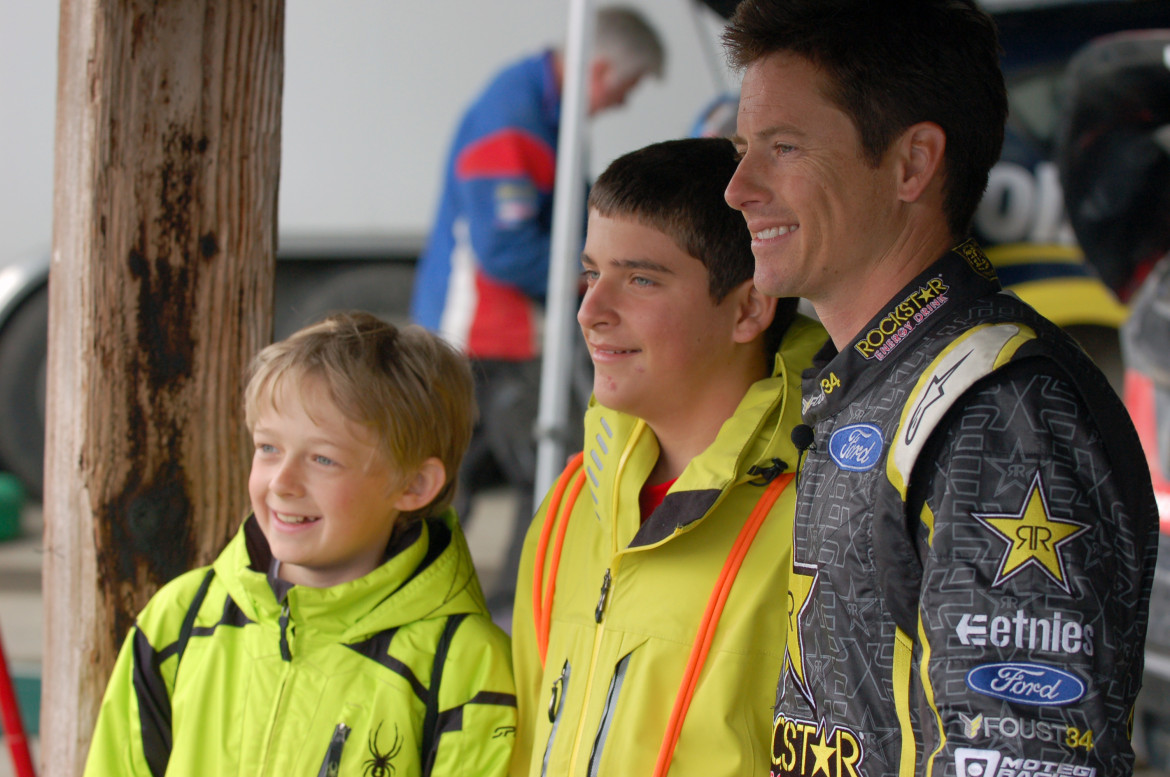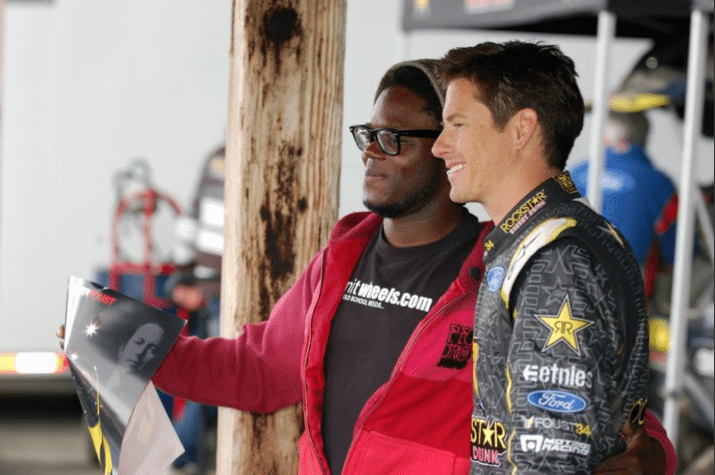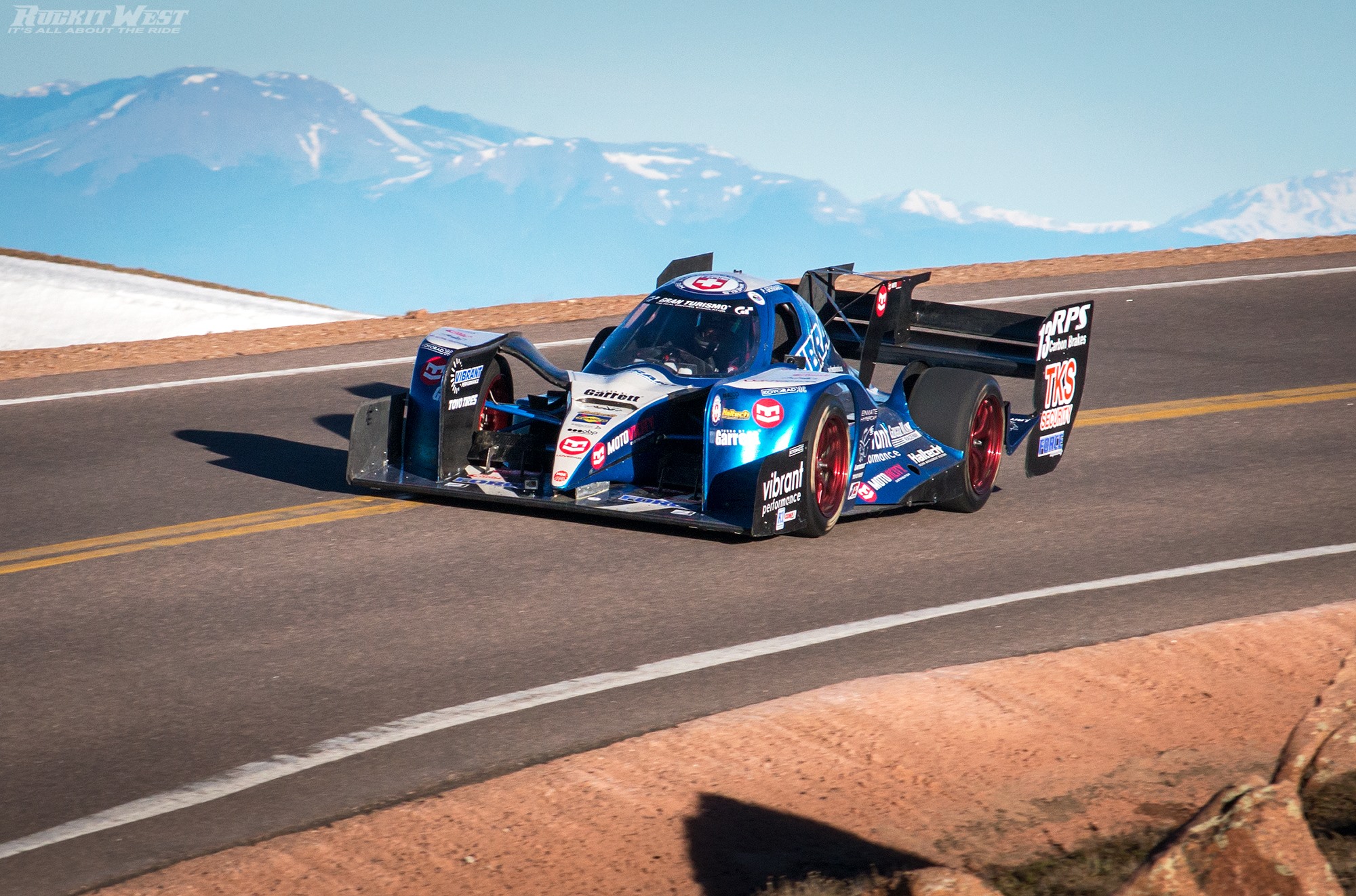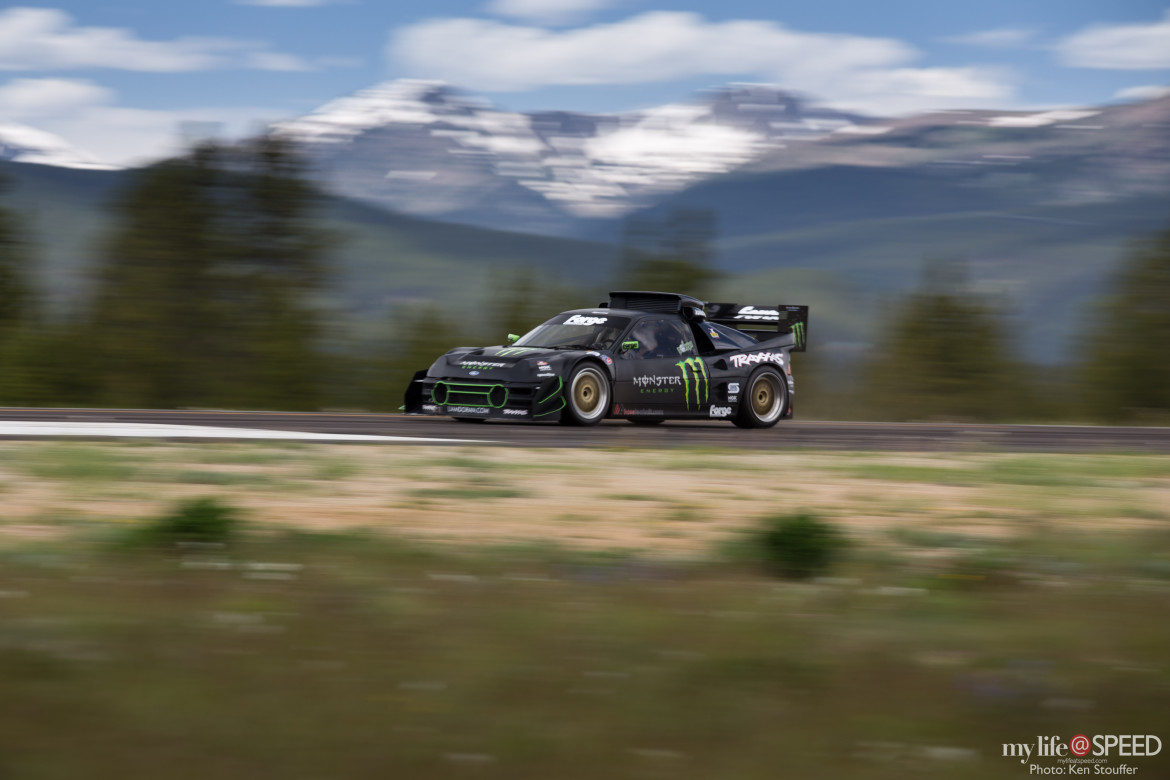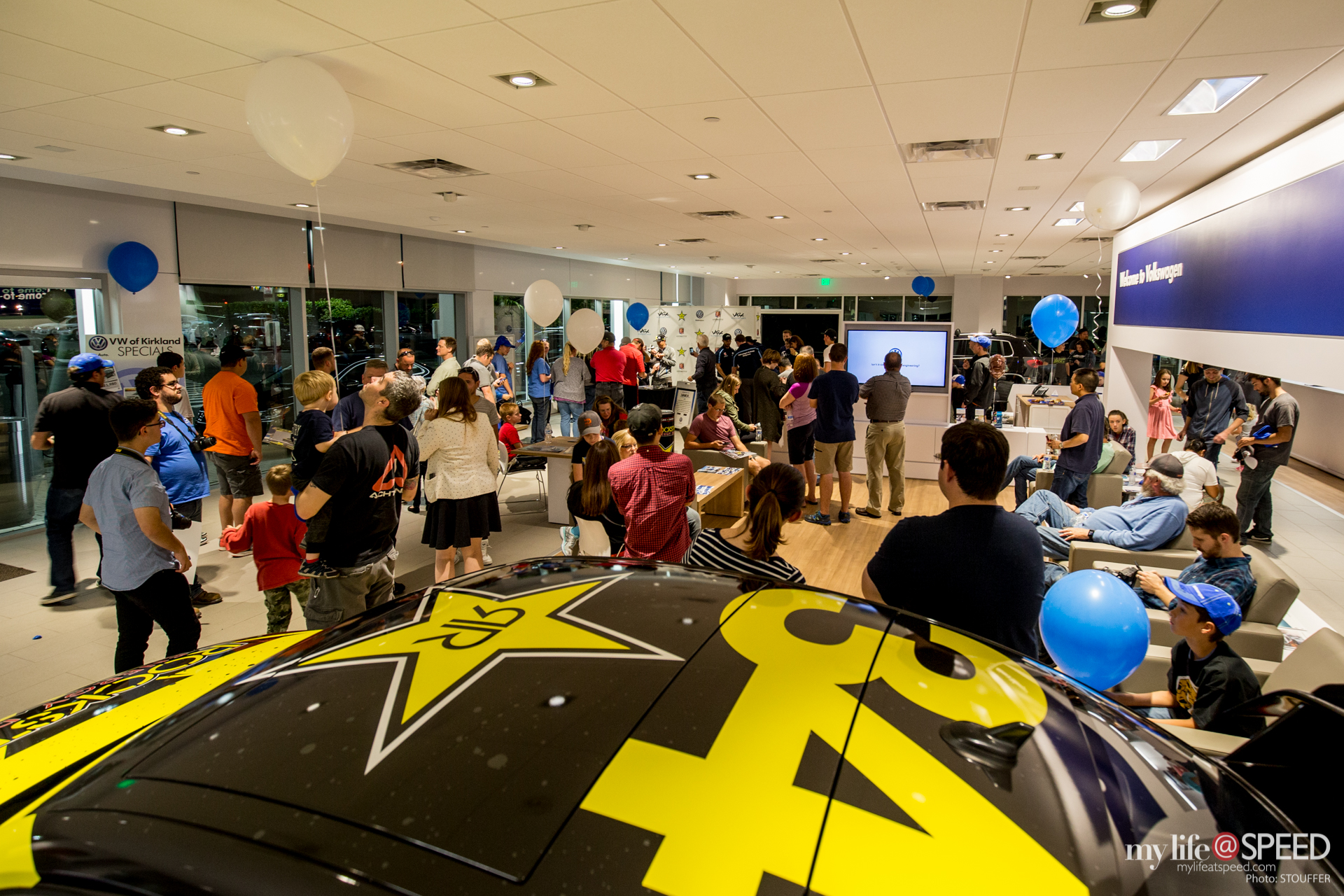Introductory Comments by Greg Tracy – Tanner has been a friend of mine since we first met on the set of “Dukes of Hazzard”. When My Life at Speed started to come together, I asked Ken Stouffer to talk to Tanner to let all of us in on what his “Life at Speed” is like on a weekly basis. Lately, he has won the European Rally Cross, is competing in the Global RallyCross Championship and continues to be at events across the country to help sponsors like Ford and Rockstar. Oh yeah – he also set a world record jump at the Indianapolis Motor Speedway before the Indy 500 for Hot Wheels. Hot Wheels has given us an opportunity to work together again, which has been so great. He is one of the best guys out there! I am honored to have him as not only a friend, but a brother. Thanks Tanner. GT

Conversation: Tanner Foust – by Ken Stouffer
Tanner Foust has his finger right square in the middle of the world-wide motorsports pie. Living a rockstar lifestyle (pun intended…just because) that has him constantly trotting the globe, like the racing junkie version of Indiana Jones, in search of his next great automotive adventure. Seriously, his website even has a “where’s Tanner” page. Sort of a Where’s Waldo, only they don’t make Tanner wear the striped shirt and silly hat. Whether it be rally, drift, Hosting TV shows, stunt work or setting World Records, Tanner does it all. And why not…the man seems to have a knack for it. All of it.
I’ll come right out and tell you, I have been a fan of Tanner Foust for quite some time. So when I was asked to speak with him for My Life at Speed, I was totally stoked. I went around telling all my friends that I had Tanner Foust on speed dial, waving my cell phone in their faces like a never-been-kissed-before school girl who just got a text from Johnny hot-guy. It’s been ridiculous. I’ve dropped his name so many times I’m surprised the damn thing hasn’t shattered on the floor in front of me. I can’t help it. I’m a fan.
So here’s the story, kids. What we’re going to do here is post up regular conversations with Tanner letting you in on what’s happening in the life of a modern day American racing hero. We’ll start off with some generic chit-chat so you can get to know him, and rest assured, we’ll get into all the good stuff you want to know, as well. Stuff like where’s he’s been working, cool projects he’s developing, maybe even who he’s dating. Behave people, I said “maybe”. We’ll take a true inside look at the life of a guy who, lets face it, we’re all a bit jealous of. Don’t worry, this won’t be the “product placement, plug all my sponsors, made for TV” version of the story. Because really, you can get that anywhere.
Here at My Life at Speed, we know you’re looking for something a bit different.
After playing phone tag with Tanner for nearly a month, we finally got together in early June, just after he set a new World Record for longest jump in a four wheeled vehicle. Which, as you’ll recall, he did at the Indy 500 just moments after we all witnesses the amazing and unforgettable finish of the 100th anniversary of Americas oldest race.
So, sit back and relax, and enjoy your Trip with Tanner…your Travels with the T-Man…your Flight of Fancy with Foust. Too much…How ’bout Tanner Talk? No?
OK…here’s Tanner Foust’s Life at Speed.
ML@S: This visit we wanted you to get to know Tanner a bit, if you don’t already. And even if you “think” you know Tanner, some of this might surprise you. We jump right into things and ask Tanner to tell us about how he got started and his early, pre-professional Life at Speed:
Tanner Foust: Like most people that are in racing it just started with an interest in cars as a kid. But I didn’t have anyone in my family that was involved in motorsports or even had any interest in motorsports. I just had an interest in cars. I could name any car on the road just by its headlights when I was six. I was just always into it. My dad had an old Porsche that he bought when I was three. It was a 912e and I thought it was the fastest thing on wheels. I actually own that car now. I bought it from him a few years ago. It turns out it’s probably one of the slowest Porsches ever made.
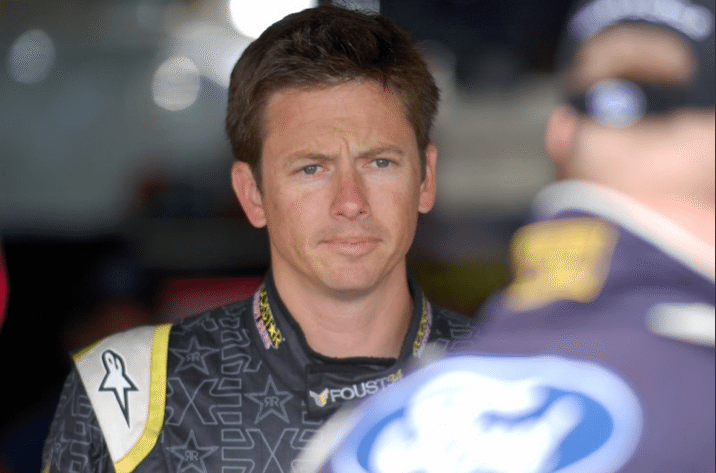
My Dad’s a Doctor and I was going down the road to becoming an engineer but then I actually graduated from College with a pre-med degree in undergrad and was thinking about med school when I got a job working for an inventor designing amusement park rides in Colorado. This guy, his name is Bill Kitchen, this guy kind of infected everyone around him with the entrepreneurial bug. Everyone around him wanted to work with him because he just did whatever was fun. And amusement rides were fun. And it got me thinking about what was fun for me, and driving cars was always my favorite thing to do. Anyway, he moved to Florida, and I went down there with him for about four months in Orlando, but I just wasn’t happy there. I had always been a mountain kid, so I came back to Colorado. I was 22 years old and like a lot of people my age I was trying to figure out what I was going to do with my life and right at that moment, when the plane was landing back in Denver, I was looking out the window and I saw a race track. I had my car at the airport so I just looked out the window and kept track of the roads as the plane was coming in for a landing.
Then I drove to this track, which was called Second Creek raceway. I walked out next to the track and there were some guys spinning around, and the guy who kicked me off the track I ended up working for as a mechanic as a volunteer in exchange for track time in his race cars. I did that for eight months before I had done enough time in the cars to earn my racing license with the SCCA and do a couple races in a spec Ford. They turned out to be great training cars. They were under-powered, but they had decent brakes and decent handling and all were within a couple horsepower of each other with sealed motors. So you could really tell when you were doing something right or wrong. I would go to these races and usually I was in the top three, and I would go to those guys who were slower than me and I would offer to coach these guys. And I would tell them where I was seeing something they were doing and that I ran a coaching service and tell them I could help them shave a half second or a second off their lap time. I get five of those guys signed up and it would help cover my cost for the day. So, I did that kind of coaching service for three years. I ended up taking the coaching thing to the limit. At that time I was sleeping in my F-250 at the racetrack and was just real bare bones.
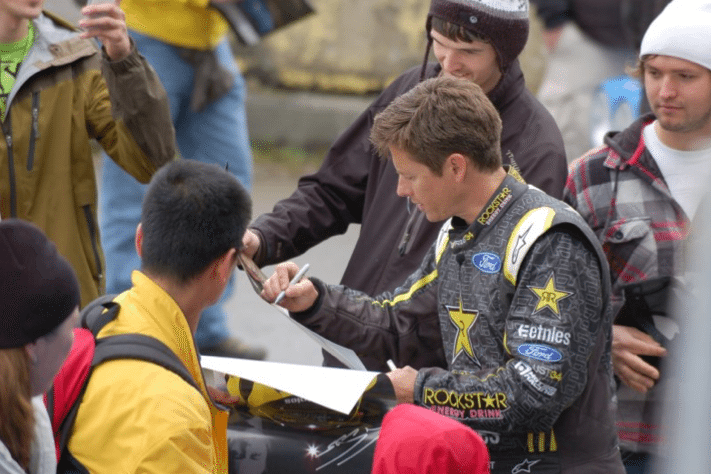
In the winter I was teaching ice driving at a school in Steamboat (Springs, CO), and it was awesome. I did that for eight years. To be honest with you that’s really what opened things up for me. It did a couple things that were critical for me. First, as a training tool I think it’s second to none to learn car control. Because when you’re on the ice the car is always at the limit and when it does slide everything is so slow-motion you can dissect exactly what is happening, and what fixes it and what makes it worse. As a biology major I always thought about things from a human perspective, and you get a chance to feel the natural human instinct take over in those scenarios and feel how bad it is and how wrong it is. So I was able to learn the importance of replacing human instinct with technique that was learned through training and muscle memory. And when I really explored this driving thing I realized that the whole concept of driving talent and having good driving instinct was not really what I expected it to be. It’s really kind of a misnomer. Nobody really has good instincts when it comes to driving. It’s not something that, as humans, we are hard wired to do. As a species we’ve only been driving cars for a hundred years. So, the instincts we have are not designed to help us behind the wheel of a car, at all.
ML@S: All of a sudden I’m hearing the voice of my college Psychology professor in my head talking about “fight or flight”.
Tanner: Yeah! If you break down what happens in fight or flight, nothing has to do with driving…your palms and your feet get a bit sweaty so that you have some traction to run, just like a dog, you know, and there’s not any decision making happening at that point. There’s reflexes happening. And with race cars, that’s what happens right before you crash. And so the whole thing with driver training and driving at the limit and racing, I think, is avoiding the fight or flight…avoiding adrenaline. That’s why I think it’s funny when someone assumes a race car driver is an adrenaline junky, because we’re really anti-adrenaline junkies. They learn to resist adrenaline at all cost. It was really interesting to me and I think on ice you can dive into that whole internal battle thats going on inside a driver in a potentially panic situation easier and better than you can in the true chaos of sliding sideways on pavement. I really spent allot of time and I really took the ice driving seriously.
The second thing that the ice driving did for me is that it forced me to talk in front of groups of people. I was just doing one on one training and I was learning the lingo but now I was getting kind of a formal training on how to teach and how to describe these concepts and then do it in front of classes of twelve or so. My number one fear before that was public speaking. But when it came to talking about driving and some of the cool parts about learning car control, it just wasn’t difficult to talk about. So for the next ten years or so, basically every weekend I was doing some sort of public speaking exercise talking about car control. Whether it was a Schlumberger safety meeting with 3000 people or just coaching with a few racers. That was a critical part of my career…getting over the public speaking issue.
ML@S: Is it safe to say that you no longer have any issues with public speaking?
Tanner: I still get nervous! I’m the best man at a wedding later this year and still don’t feel like I can just go wing it. But I’ve learned to turn that nervous energy into a positive thing. And it’s important, to be a racer, and to go race with other peoples money on a professional level you have to be able to interview. And if you can’t piece your words together in an interview in a way that sends the right message then people don’t trust you.
ML@S: What other types of training were you doing?
Tanner: I was doing marketing events 250-300 days a year and leading marketing programs and doing really detailed tactical driver training for Navy SEAL groups where we would practice left foot braking to aim a turret with night vision goggles on. It was just the coolest stuff and so much fun. I really enjoyed that whole experience, but I really wanted to make the race driving thing more professional.
ML@S: When you looked out the window of that plane, contemplating your future, did you have a goal in mind, or any idea where it would lead?
Tanner: Getting paid to race cars was so far out of the realm of what I thought was possible that I couldn’t even make it a goal. Not a long-term goal, or a pipe dream, even. Like so many people that have an interest in cars it was just…that’s just something that people who are born into the industry get to do. It just didn’t seem possible. But I was getting into the industry and meeting racers through the ride and drive program when I got a job at Pikes Peak International Raceway. I got a job as a sales guy, selling sponsorships, and I kind of figured out that the whole deal behind racing is that if you’re going to make it a business you have to figure out why companies spend money on it. I got a quick nine month education on that and learned that the whole race sponsorship thing is such a human deal. You’re really dealing with an individual who’s just trying to do the right thing in their job and maybe get a promotion someday. You can’t necessarily look at the company and think about what would be right for the company, you have to look at the marketing manger themselves and think about what’s right for that person. How do you make that person look like a hero. And that was kind of a big step…recognizing that conversations with real people made it seem allot more feasible to talk to companies, when you were really just talking to a guy named Dave. And Dave just wants some photographs that he can show his boss and wants a place where his boss can come to watch the races where there’s a good seat.
Conversation: Tanner Foust Part 2: Tanner’s first professional race, how he introduced Ken Block to Gymkhana, and other good stuff. Stay tuned!

